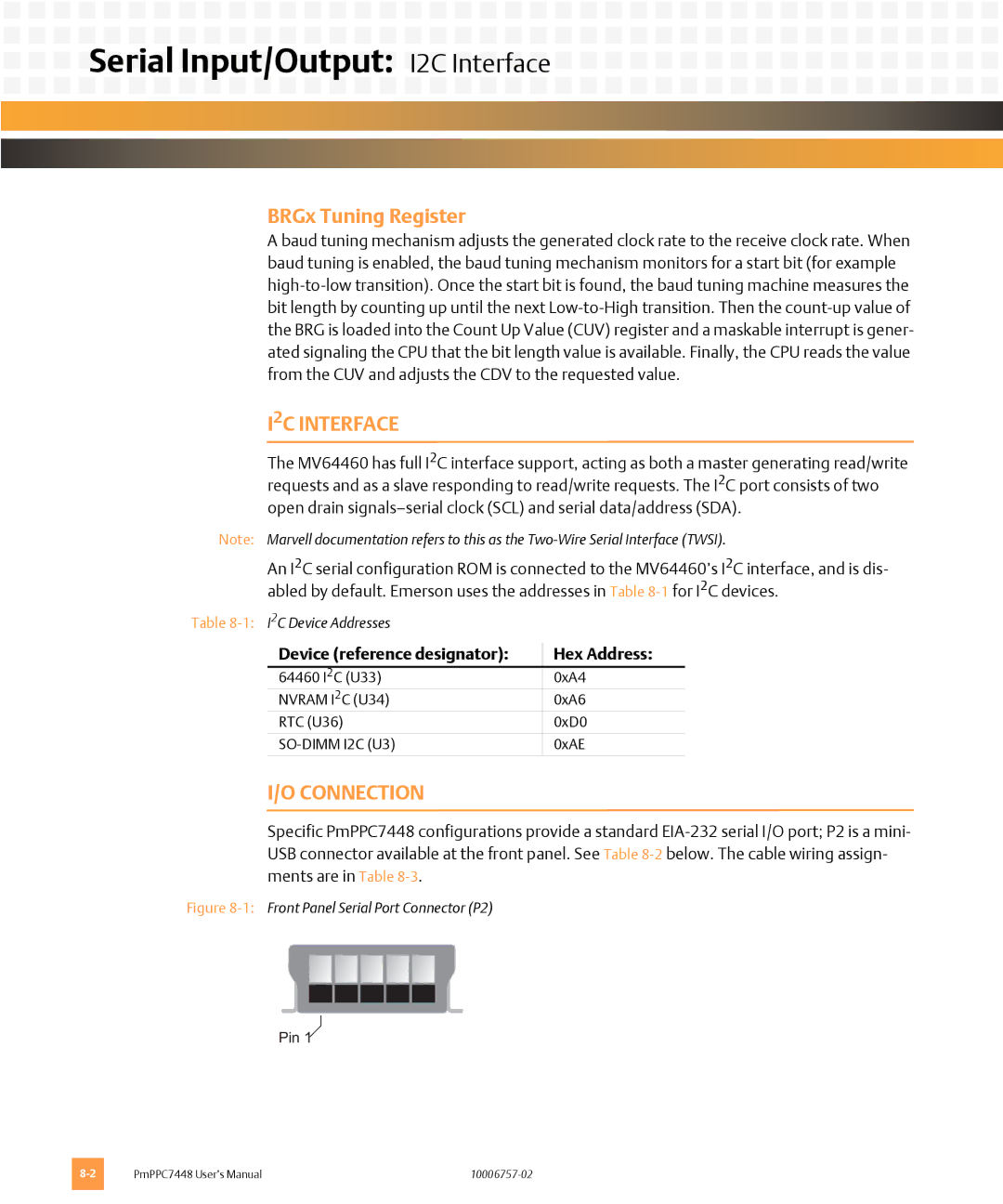



 Serial Input/Output: I2C Interface
Serial Input/Output: I2C Interface 

















BRGx Tuning Register
A baud tuning mechanism adjusts the generated clock rate to the receive clock rate. When baud tuning is enabled, the baud tuning mechanism monitors for a start bit (for example
I2C INTERFACE
The MV64460 has full I2C interface support, acting as both a master generating read/write requests and as a slave responding to read/write requests. The I2C port consists of two open drain
Note: Marvell documentation refers to this as the
An I2C serial configuration ROM is connected to the MV64460’s I2C interface, and is dis- abled by default. Emerson uses the addresses in Table
Table
Device (reference designator): | Hex Address: |
64460 I2C (U33) | 0xA4 |
NVRAM I2C (U34) | 0xA6 |
RTC (U36) | 0xD0 |
|
|
0xAE | |
|
|
I/O CONNECTION
Specific PmPPC7448 configurations provide a standard
USB connector available at the front panel. See below. The cable wiring assign- ments are in Table
Figure 8-1: Front Panel Serial Port Connector (P2)
Pin 1
PmPPC7448 User’s Manual |
